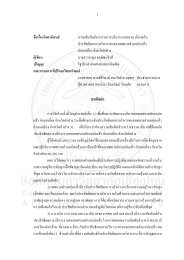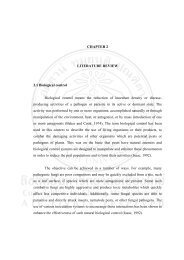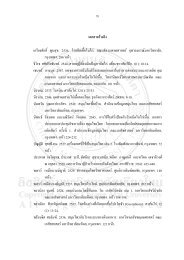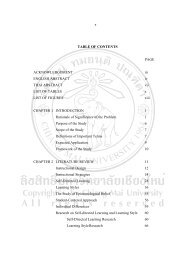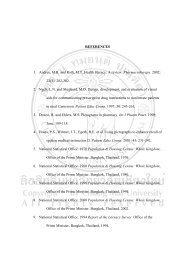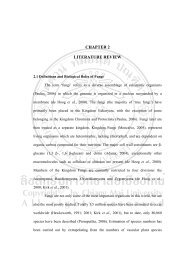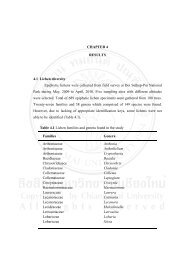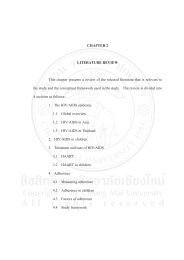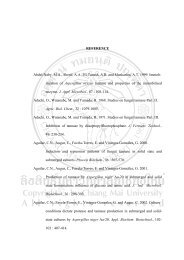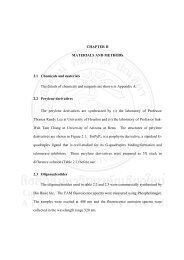prevalence and molecular characteristics of vibrio species in pre ...
prevalence and molecular characteristics of vibrio species in pre ...
prevalence and molecular characteristics of vibrio species in pre ...
You also want an ePaper? Increase the reach of your titles
YUMPU automatically turns print PDFs into web optimized ePapers that Google loves.
Table 4: Cholera p<strong>and</strong>emics<br />
P<strong>and</strong>emic Dates Orig<strong>in</strong> Biotype<br />
I. 1817-1823 Indian subcont<strong>in</strong>ent -<br />
II. 1829-1851 Indian subcont<strong>in</strong>ent -<br />
III. 1852-1859 Indian subcont<strong>in</strong>ent -<br />
IV. 1863-1879 Indian subcont<strong>in</strong>ent -<br />
V. 1881-1896 Indian subcont<strong>in</strong>ent -<br />
VI. 1899-1923/5 Indian subcont<strong>in</strong>ent Classical<br />
VII. 1961-Present Indonesia O1 classical,<br />
15<br />
O1 E1 Tor<br />
VIII. 1992-Present Indian subcont<strong>in</strong>ent O139 serotype<br />
V. parahaemolyticus is the most common cause <strong>of</strong> food borne disease <strong>in</strong> the<br />
Asian region. In Japan, it has been implicated as a cause <strong>of</strong> at least a quarter <strong>of</strong> the<br />
total food borne diseases (Feldhusen, 2000). In Korea, food borne outbreaks due to<br />
Vibrio from 2003 to 2006 were 80, <strong>and</strong> 2261 human <strong>in</strong>fections were recorded (Lee et<br />
al., 2008 a). S<strong>in</strong>ce 1996 V. parahaemolyticus O3:K6 is considered to be the first<br />
p<strong>and</strong>emic stra<strong>in</strong> due to its s<strong>pre</strong>ad from India to many countries with<strong>in</strong> a short period<br />
<strong>of</strong> time. Western countries also experienced gastroenteritis due to V.<br />
parahaemolyticus (Cabanillas-Beltrán et al., 2006).<br />
2.6.2 Regulatory perspective <strong>of</strong> Vibrio <strong>in</strong> shrimp<br />
Japan, the European Union <strong>and</strong> the United States are the largest seafood<br />
importers <strong>and</strong> account for 82% <strong>of</strong> the total volume <strong>of</strong> seafood imports <strong>in</strong> the world<br />
(FAO, 2005). Increas<strong>in</strong>g awareness <strong>and</strong> dem<strong>and</strong> <strong>of</strong> consumers for safe <strong>and</strong> high<br />
quality food forced the governments to impose strict regulations <strong>and</strong> rules on food




